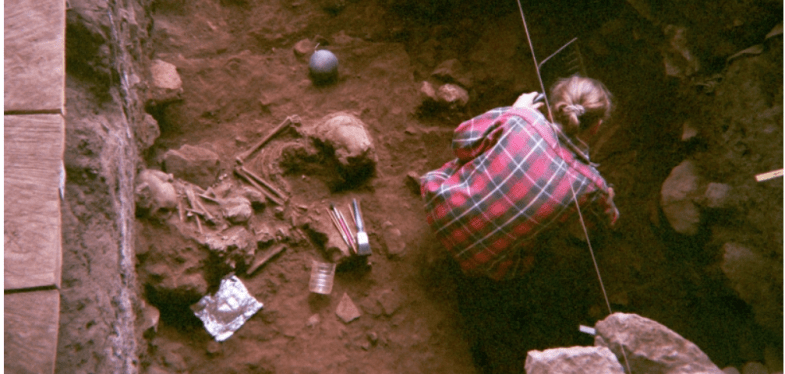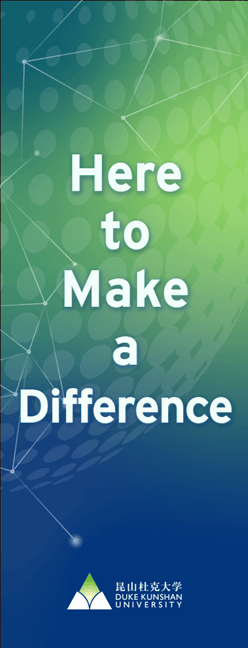After rapid developments in ancient DNA research, or archaeogenetics, leading experts from around the world, including Duke Kunshan University, have proposed a set of ethical standards for the handling and testing of human remains.

DNA research using ancient human remains, such as those unearthed in Cameroon, has expanded rapidly since the 2000s. Photo by Isabelle Ribot, January 1994
More than 60 archaeologists, anthropologists, curators and geneticists representing over 20 countries have drafted five global guidelines, with the aim to minimize damage to remains, promote data sharing, and properly engage indigenous communities.
The guidelines appear in an article published in the international journal Nature.
Scott MacEachern, vice chancellor for academic affairs at Duke Kunshan University, and a world-leading professor of archaeology and anthropology, was among the article’s co-authors. He said ethical guidelines are essential to ensuring researchers protect ancient human remains and are sensitive to the diverse perspectives of descendant communities, especially those in regions with a history of colonialism or the expropriation of lands and artifacts.
“Ancient DNA material is a finite resource. Getting hold of present-day DNA requires only going out and taking swabs, but it’s not so easy when you’re looking for petrous bones from 200,000-year-old individuals. These are rare and often do not preserve,” he said. “Archaeology is inherently a destructive discipline – we can’t un-dig an archaeological site – so we need to carefully consider the ethic of stewardship, to ensure this finite resource is treated with extreme care.”
MacEachern, whose archaeological work focuses on the southern Lake Chad Basin of Central Africa, said he and his co-authors were attentive to the exploitative relationships that can exist between Western researchers and local communities in the underdeveloped regions where work is carried out. This is important, he said, as archaeogentics is high-tech and expensive, and most laboratories conducting this research are in wealthy developed nations.
“Archaeology, anthropology and related disciplines historically have a poor record when it comes to the treatment of human remains from indigenous communities,” MacEachern said. “As archaeologists, we tell stories about the past, but indigenous or descendent communities may disagree or have alternative stories that they’d prefer to have heard. With this Nature document, we wanted to look at how we develop an ethic of stewardship in consultation with these communities.”
The field of archaeogentics has emerged only in the past two decades. Previously, the dominant method for inferring the genetics of past populations was to extract DNA from present-day subjects and work backward. However, in 2010, Swedish evolutionary geneticist Svante Pääbo sequenced the Neanderthal genome. This was followed by rapid growth in the use of ancient remains, bringing several problems including a lack of consultation with indigenous communities.

The ability to sequence ancient DNA revolutionized the study of past populations
While countries including the United States and Australia have introduced legislation to require institutions consult with indigenous groups before transferring remains of ancient individuals, the Nature article points out that this method does not fit when the remains have few or no material or oral links to present-day groups.
In addition, it adds that promoting the idea that some groups have more ownership of cultural heritage than others can cause social conflict, while discussions in parts of the world about who is indigenous have contributed to xenophobic and nationalistic narratives.
What has been missing, said MacEachern, is a set of principles that can apply globally and guide the behaviors and practices of researchers from different disciplines and based around the world.
The proposed ethical guidelines stem from a virtual workshop held on Nov. 4 and 5, 2020. Attendees came from institutions including Harvard University, Ludwig Maximilian University, Peru’s Universidad de San Martín de Porres, the Chinese Academy of Sciences, the University of Cape Town, Japan’s National Museum of Nature and Science, Australian National University, Universidad Nacional de Córdoba in Argentina, Tel Aviv University, and Pakistan’s Hazara University.
Each co-author committed to the following five global guidelines:
- Abide by all local regulations in the places where they work and where human remains are sampled and stored.
- Prepare a detailed plan before any study including research questions, proposed techniques, timeline for the return of unused material, and dissemination of results.
- Minimize damage to human remains while maximizing yield of useable data.
- Make data available after publication to allow critical re-examination of scientific findings.
- Engage with other stakeholders and ensure respect and sensitivity to stakeholder perspectives, including indigenous groups.
“There are currently differing attitudes in the archaeological and archaeogenetic communities toward stewardship and dealing with descendant and indigenous groups,” said MacEachern, “but we feel this article sets the framework for that conversation, not just for researchers but also descendant communities and their advocates, peer reviewers, and the wider academic community.”
CITATION: “Ethics of DNA Research on Human Remains: Five Globally Applicable Guidelines,” Lars Fehren-Schmitz, Mary Prendergast, David Reich, Jakob Sedig, Kendra Sirak, Philipp Stockhammer. Nature, Oct. 21, 2021. Link: https://www.nature.com/articles/s41586-021-04008-x
Related: Ancient DNA from West Africa reveals deep human history









